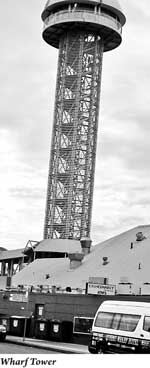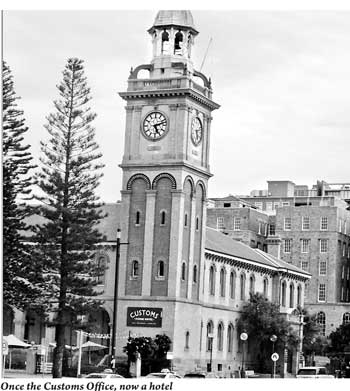Monday Jan 19, 2026
Monday Jan 19, 2026
Saturday, 10 March 2018 00:00 - - {{hitsCtrl.values.hits}}
 ‘Like taking coal to Newcastle’ was a popular saying from our childhood days. We didn’t really understand why it was so commonly used until many years on we were taught that it was a place for the production of coal.
‘Like taking coal to Newcastle’ was a popular saying from our childhood days. We didn’t really understand why it was so commonly used until many years on we were taught that it was a place for the production of coal.
Having read about Newcastle, one of my nephews and I decided to do a quick mid-week trip to get a glimpse of how this famous ‘coal city’ looks like. Not that we saw anything of coal production but we certainly saw why the city has been declared “the largest coal exporting harbour in the world”. Records indicate that over 161 million tonnes of coal were exported from the harbour in 2016.
As we did a stroll down the well-maintained walkway by the sea, we saw a huge ship moving into the harbour. We were told that it could possibly be a ship brining coal from Queensland, the state adjoining New South Wales where Newcastle is situated. We watched the ship entering the harbour from Nobbys Headland and Lighthouse, and swiftly move towards the wharf, at the far end from where we stood.
Newcastle had gained a reputation as a “hellhole” as it was a place where the most dangerous convicts were sent to dig in the coal mines as harsh punishment for their crimes. In addition to coal the convicts had also been used in timber and lime-burning industries. From 1804 to 1822, Newcastle had been a penal settlement established for the punishment of secondary offenders from Sydney. The use of convicts in various industries is a fascinating story. To quote one example: Newcastle had once been rich with Red Cedar, a timber used in construction and ship-building. Cedar logs felled along the river were bound together and poled downstream by convicts, cut into planks at the water’s edge and stored. When archaeological surveys were done at this place (it came to be known as Convict Lumber Yard), lot of objects relating to both Indigenous (Aboriginal) and early European settlements had been discovered.
Wharf Tower
 The Wharf Tower gives a panoramic view of the harbour and the surroundings but we were in no mood to climb right to the top. We climbed a few steps and enjoyed the scenery from a lower deck. When looked from a distance the Tower is quite impressive.
The Wharf Tower gives a panoramic view of the harbour and the surroundings but we were in no mood to climb right to the top. We climbed a few steps and enjoyed the scenery from a lower deck. When looked from a distance the Tower is quite impressive.
Boat services are available from a few points taking passengers to resident areas which can be seen far away. Working population seem to find it a more convenient arrangement to reach the city or daily work. Visitors can enjoy cruises visiting the nearby areas. There are several restaurants along the wharf walkway providing a lovely setting to relax and enjoy a meal. Although the biggest tourist attraction in Newcastle is the beach, the highlight of the City is its hilly setting. Most roads are quite steep. Looking from a distance one can see iconic buildings on top of the hills. One of the best examples is the Christ Church Cathedral which dominates the skyline of Newcastle and is a popular place for visitors to go and enjoy its architecture, music and art. The city has an antique look with a lot of old buildings in almost every street. Most of them have been converted into offices, restaurants and hotels but their exterior maintain the old look.
The building where the Customs Office was housed in the early days is today an upmarket hotel. Yet the architecture of the building remains the same. And the name of the hotel is ‘Customs Office Hotel’.

